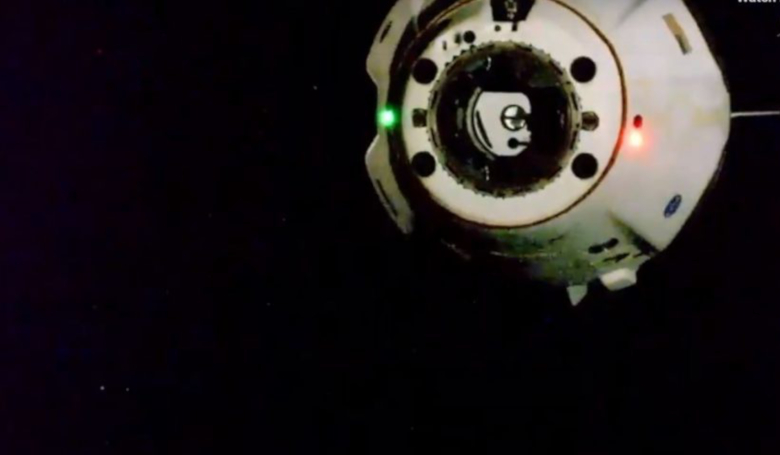NASA’s SpaceX Demo-2 mission passed a significant milestone this evening as the company’s Crew Dragon spacecraft undocked from the International Space Station at 7:35 pm EDT (23:35 GMT) yesterday after more than two months of docked operations in orbit. Astronauts Robert Behnken and Douglas Hurley, traveling aboard the spacecraft they named “Endeavour,” will spend one more night in space before beginning their journey back to Earth on Sunday in the first return of a commercially built and operated American spacecraft carrying astronauts from the space station.
With the spacecraft on its path home, the astronauts will settle in for an eight-hour sleep period. While they’re asleep, a six-minute departure phasing burn at 1:48 am EDT (05:48 GMT) Sunday, 2 August, will set the Dragon Endeavour on the proper orbital path to a planned splashdown in the Gulf of Mexico off the coast of Pensacola, Florida.
The deorbit burn, which slows the spacecraft’s forward speed enough to begin its descent, is scheduled for 1:51 pm EDT (17:51 GMT) on Sunday, with splashdown at 2:48 pm EDT (18:48 GMT). Teams continue to closely monitor Hurricane Isaias and evaluate impacts to the landing sites in the Gulf of Mexico along the Florida Panhandle. Teams have several weather decision milestones ahead of and after undocking to adjust the splashdown location and time based on the forecasted conditions for recovery.
Behnken and Hurley arrived at the orbiting laboratory on May 31, following a successful launch on May 30 on a SpaceX Falcon 9 rocket from NASA’s Kennedy Space Center in Florida. During their 63 days aboard the station, Behnken and Hurley contributed more than 100 hours of time to supporting the orbiting laboratory’s investigations, participated in public engagement events, and supported four spacewalks with Behnken and Cassidy to install new batteries in the station’s power grid and upgrade other station hardware.
These activities are a part of NASA’s Commercial Crew Program, which has been working with the U.S. aerospace industry to launch astronauts on American rockets and spacecraft from American soil the International Space Station for the first time since 2011. This is SpaceX’s final test flight and is providing data on the performance of the Falcon 9 rocket, Crew Dragon spacecraft and ground systems, as well as in-orbit, docking, splashdown and recovery operations.
The test flight also is helping NASA certify SpaceX’s crew transportation system for regular flights carrying astronauts to and from the space station. SpaceX is readying the hardware for the first rotational mission, which would occur following NASA certification.











